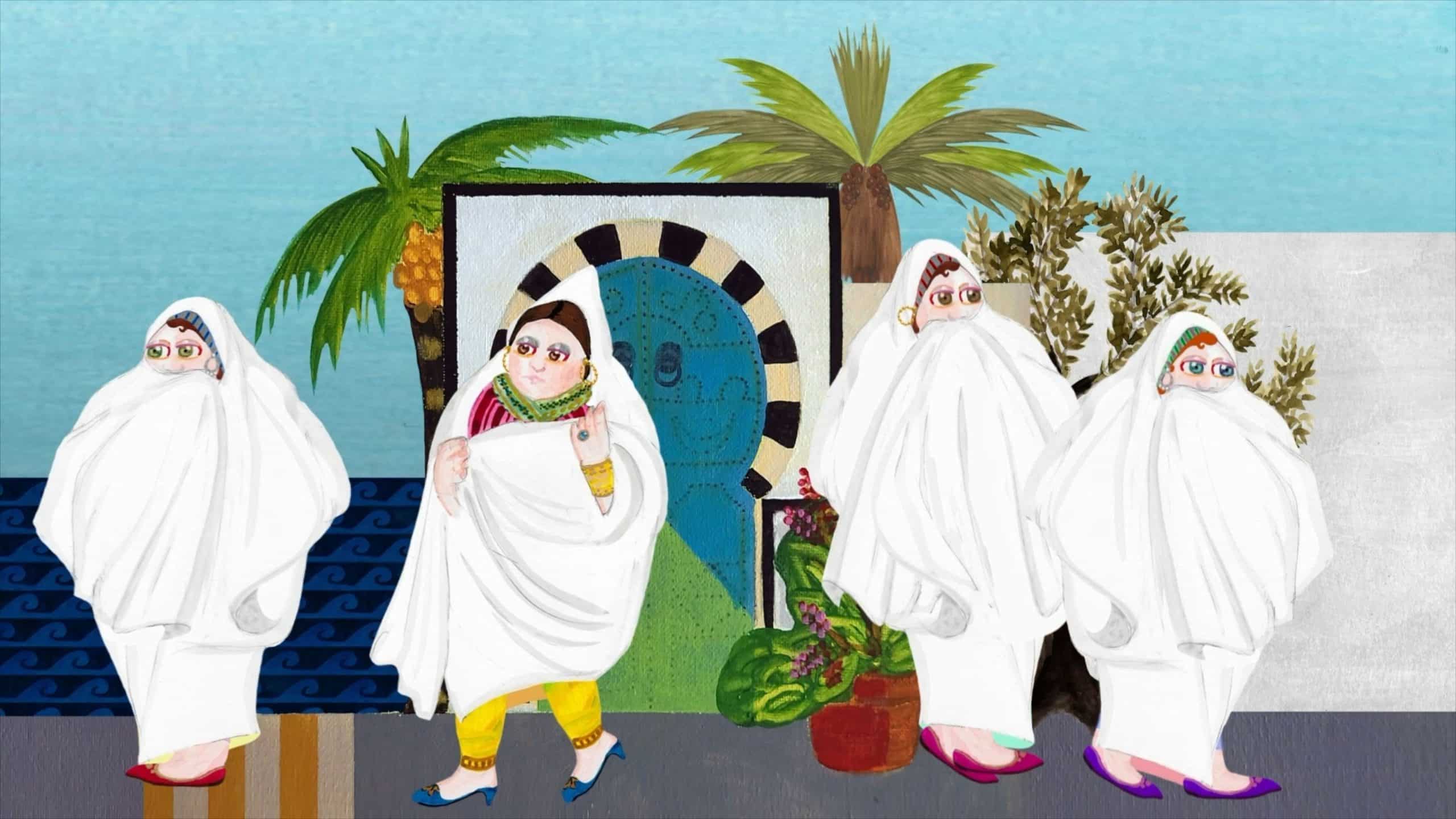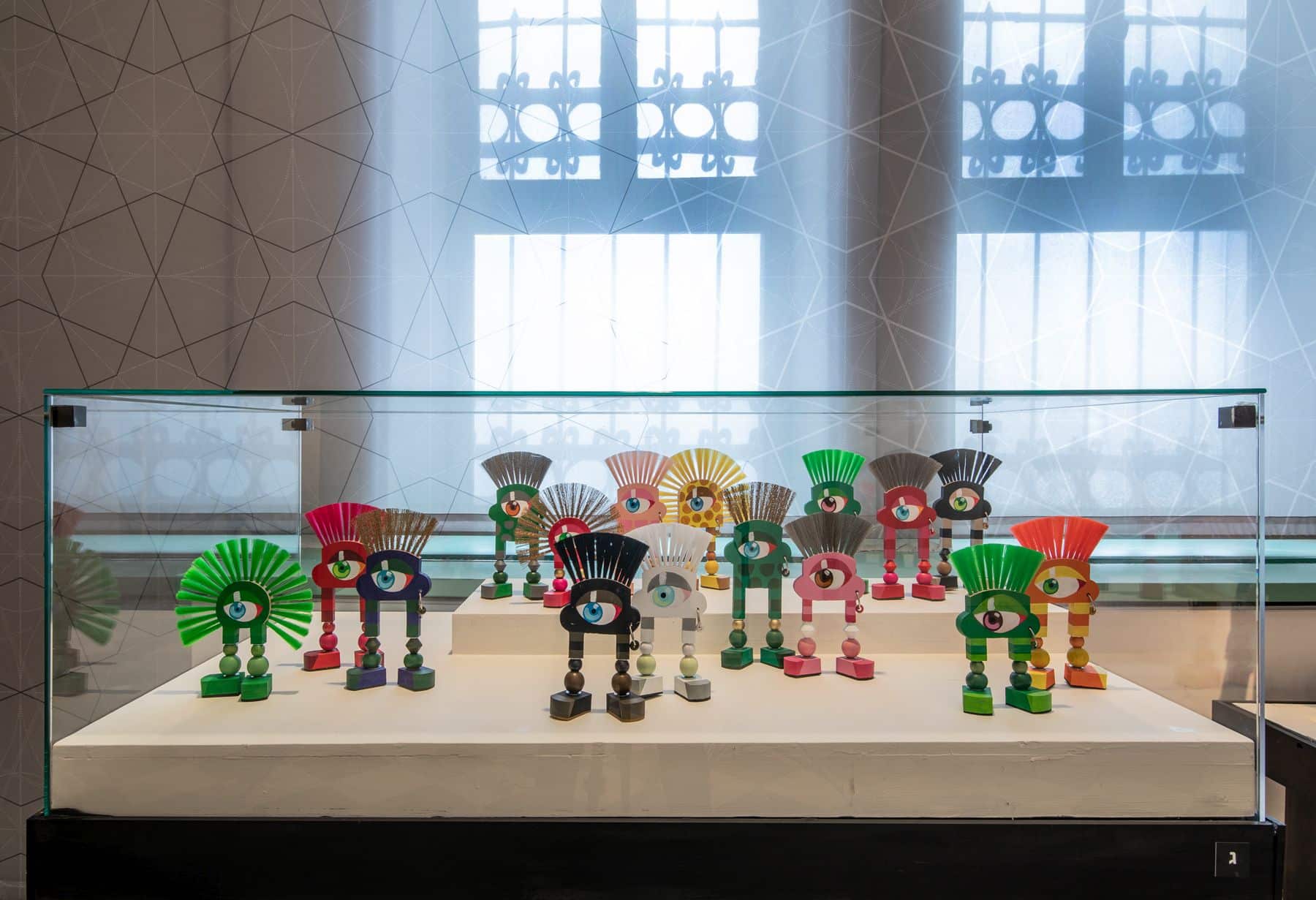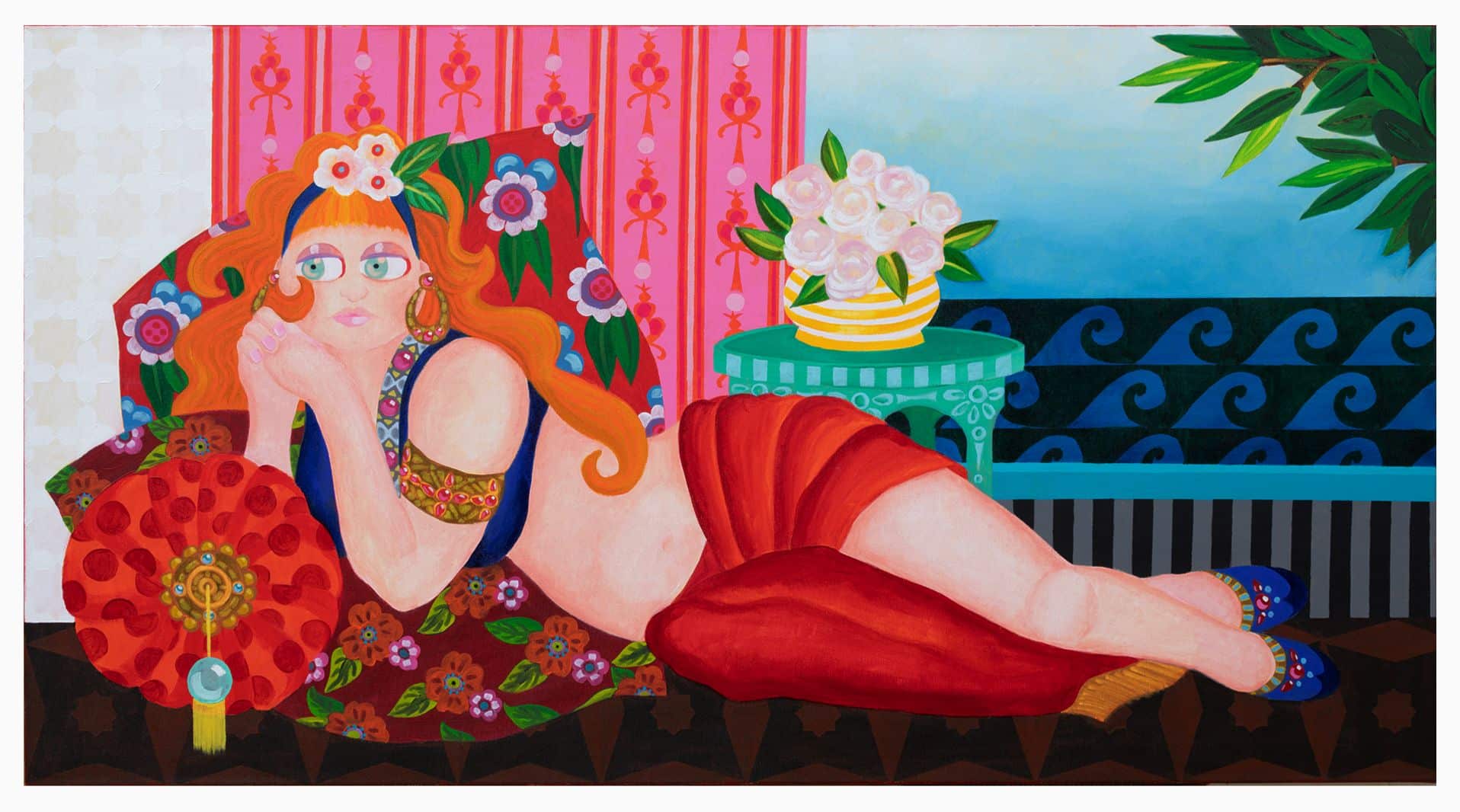
Eliyahou Eric Bokobza’s solo exhibition “Family Matter” opens a window onto the history and culture of the Jewish community in Tunisia in the late nineteenth and early twentieth centuries. It focuses on the personal story of the artist’s parents who moved from Tunisia to Paris and from there to Israel. The exhibition invites visitors into a typical home of a Jewish family in Tunis, and is based on the stories, fragments of memories, actual artifacts and archival material reflecting the traditions of the artist’s family and of Tunisia’s Jewish community.
The exhibition’s name has a double meaning: the heritage of the community, and within it, the artist’s family; and “matter” – a situation. This “situation,” which was sometimes problematic, is presented in the private and intimate space of the family, relying on fragments of Bokobza’s personal memories as well as his subjective interpretation. The double meaning is reflected in the range of ways to view the exhibition, beginning with an ethnographic look at the objects on display and continuing to the intimate observation of the family, including their embroidered bedclothes hanging on laundry lines and drying in the sun. The assemblage of figures and objects in the exhibition’s installations, leads visitors on a tour of a space that is both private and imagined, one which exposes intimate moments as well as customs and conventions reflecting and emphasizing the uniqueness of the Tunisian community in the late nineteenth and early twentieth centuries. This uniqueness manifests itself in the intersection of local culture, French culture, which permeated due to Tunisia’s transformation into a client state of France in 1881, as well as Jewish and Zionist values.
The space in the museum has been divided into rooms according to the layout of a typical home in the community: dining room, kitchen, bedroom and children’s room. By means of video animation, one or more figures from the family is present in each room at a single moment of an ordinary day. The public space outside the home is reflected in two additional works: one represents a window that looks out onto Muslim public buildings, homes and the sea, while the other presents a tombstone in a Jewish cemetery, from which the voice of a mother buried beneath it emerges, speaking to her beloved son.
Each room features one or more installations that combine contemporary works with objects brought by members of the Bokobza family from Tunisia to France and later to Israel. Some are household items, but most are articles from the dowry of the artist’s mother. Although they are utilitarian in nature, they were not brought to Israel because of their usefulness, but more for their symbolic and nostalgic value, almost as sacred objects. Bokobza’s parents understood that they could never visit Tunisia again, and as such, these objects fulfilled a psychological need to carry with them the private and community heritage of their lost birthplace, including the graves of family members. The artist considers these items to be physical “remains” bearing the memory of the culture and the country that was left behind, which is why he chose them as anchors and a starting point for memories from his personal past.
Bokobza did not make do with a solo exhibit; he asked the Tunisian Jewish community to contribute objects they had brought with them to Israel. Garments are exhibited in this part, as well as food and serving utensils, jewelry and sacred books. All of them represent the choices other families made regarding which objects to bring from Tunisia, thus telling additional stories of the community’s life.





